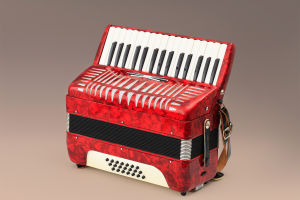Welcome Lykkers! Among the many unique and colorful traditions of Catalonia, Caga Tió—the "Pooping Log"—stands out as one of the most endearing and whimsical.
This charming figure, a wooden log with a painted smiling face, a red barretina (a traditional Catalan hat), and sometimes little legs, is an essential part of Catalan holiday festivities.
Caga Tió de Nadal Tradition and History - Christmas Pooping Log - Catalan Christmas Tradition ✨
Video by Tió de Nadal
The Origins of Caga Tió
The roots of the Caga Tió tradition are deeply tied to Catalonia's rural and agricultural past. Historically, families in the region relied on wood for warmth during the cold winter months. Over time, the log became a symbol of sustenance and protection during winter, and its role evolved into a festive tradition.
The practice is believed to have pre-orthodox origins, possibly connected to pagan celebrations of the winter solstice, which honored nature and the cycle of life. Over centuries, it was incorporated into customs, reflecting the blending of ancient and orthodox traditions.
Preparing the Caga Tió
The Caga Tió tradition begins in early December, typically on December 8, the Feast of the Immaculate Conception. Families "adopt" a log—either purchased from markets or homemade—and decorate it with a cheerful face and a red hat. The log is placed in a cozy spot in the home, often covered with a blanket to keep it warm.
In the weeks leading up to festive season, children take care of the Caga Tió, "feeding" it with small treats like fruit, nuts, and bread every night. This ritual symbolizes nurturing the log to prepare it for the magical moment when it "stools" presents.
The Main Event: Making Caga Tió
On the Festive Eve or Day, the much-anticipated moment arrives. The Caga Tió is placed in the center of the room, and the children gather around it with sticks. Singing traditional songs, such as the famous "Caga Tió" tune, they playfully hit the log to encourage it to "defecate." The lyrics, which humorously ask the log to defecate gifts and sweets, add to the festive and playful atmosphere:
"Caga tió,
Caga torró,
Avellanes mató,
Si no cagues bé,
Et donaré un cop de bastó!"
Translation:
"Stool log,
Stool nougat,
Hazelnuts and cheese,
If you don’t stool well,
He’ll hit you with a stick!"
As the children sing and hit the log, adults sneak small gifts and treats under the blanket covering the log. These surprises often include candies, nougat (torró), small toys, and other goodies.
A Symbol of Community and Joy
Beyond the humor and fun, Caga Tió symbolizes generosity, community, and the spirit of giving. The tradition reinforces the bond between family members and friends, creating lasting memories during the holiday season.
The log's playful nature also reflects the Catalan sense of humor and connection to the earth. Catalonia’s culture often intertwines the sacred and the irreverent, as seen in other holiday traditions like the caganer, a cheeky figurine included in nativity scenes.
Modern Interpretations
Today, Caga Tió continues to be a beloved part of Catalan celebrations. Markets in cities like Barcelona and Tarragona sell beautifully decorated logs, while schools and community groups organize Caga Tió activities for children.
Despite its whimsical nature, the tradition has evolved to reflect modern values. Many families focus on sustainability, using handcrafted or locally sourced logs, and emphasize its cultural and familial significance over commercial aspects.
Caga Tió is more than just a quirky tradition; it is a celebration of Catalan identity, humor, and togetherness. By blending ancient rituals with modern festivities, this "pooping log" has captured the hearts of generations. For those lucky enough to experience it, Caga Tió offers a glimpse into the unique and joyful spirit of Catalan culture. Whether you're a visitor or a local, embracing this tradition is sure to bring laughter and warmth to your holiday season.


